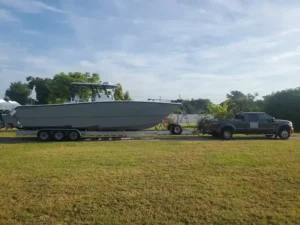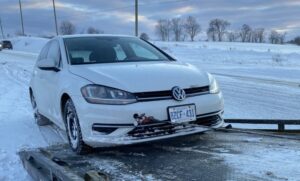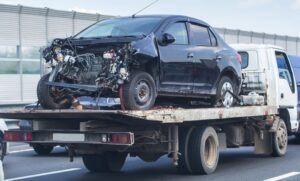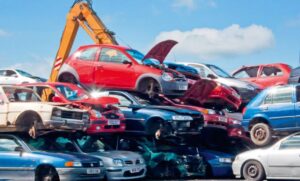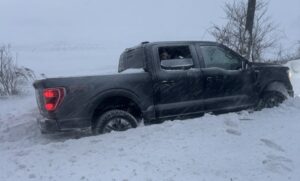The automotive landscape is undergoing a rapid, fundamental shift. The electric vehicle (EV) is no longer a niche product; it is a mainstream choice for residents in Aurora and across Ontario. As EV adoption accelerates, so too must the expertise and equipment of the supporting infrastructure, particularly the towing industry.
For a specialized provider like Pars Towing, operating in the high-volume traffic corridors and varied conditions of the York Region, understanding the specific rules and technical requirements for towing an electric vehicle is not just a matter of good service—it is a matter of vehicle safety, regulatory compliance, and preventing thousands of dollars in catastrophic drivetrain damage.
- Learn More >>>> light duty towing service
I. The Fundamental Principle: Why Electric Vehicles are Different
The core difference between towing an internal combustion engine (ICE) vehicle and towing an electric vehicle lies entirely in the drivetrain and the battery architecture. Ignoring this difference is the single greatest risk in electric vehicle recovery.
The Problem of the Spinning Wheel
In a traditional gas car, when the vehicle is placed in neutral, the transmission is disengaged from the engine. The wheels can spin freely, allowing the car to be towed with two wheels on the ground (via a wheel-lift or tow dolly) for short distances without issue.
In most electric vehicles, this is not the case. The electric motor, which is often integrated directly into the axle or wheel hub, is permanently connected to the wheels.
- Unintentional Generation: When the wheels of a non-operational EV spin on the road, they turn the electric motor. The motor then begins to function as an unintended generator, creating an electrical current.
- Lack of Lubrication: Unlike when the car is running, the motor’s internal cooling and lubrication systems are often inactive when the vehicle is off or disabled.
- The Risk of Catastrophic Damage: The current generated by the spinning motor has nowhere safe to go. This can rapidly overheat the motor, damage the power electronics (inverter), and, in severe cases, cause a short circuit or thermal event, leading to the complete destruction of the drivetrain components. The warranty of the vehicle is also immediately voided by improper towing.
This fundamental technical reality establishes the first, and most important, rule for towing an electric vehicle: all four wheels must be lifted entirely off the ground during transport.
- Learn More >>>> heavy duty towing service
II. The Golden Rule of Towing Electric Vehicles: Flatbed or Nothing
Given the risk of motor engagement, the method of transport is not a choice; it is a technical necessity.
The Mandate for Flatbed Towing
For nearly all modern battery electric vehicles (BEVs) and most plug-in hybrid electric vehicles (PHEVs), the manufacturer’s instructions explicitly mandate the use of a flatbed carrier tow truck.
- Zero Ground Contact: A flatbed tow truck, also known as a rollback, uses a hydraulic or winch system to place the entire vehicle onto a long, flat deck. With all four tires resting securely on the truck’s bed, there is zero risk of the drive wheels spinning, thus protecting the delicate and expensive electric drivetrain.
- Protection of the Battery Pack: The large, heavy battery pack in an EV is typically located in the vehicle’s chassis floor. This gives the EV a low centre of gravity, which is beneficial for driving, but makes it highly susceptible to damage from ground clearance issues. The flat, stable surface of a flatbed ensures the entire undercarriage and battery casing are protected from road debris, bumps, or scraping during transport.
- Safety for the High-Voltage System: In the event of a collision, there is a risk of damage to the high-voltage (HV) cables and components. A flatbed allows tow operators to secure and transport the vehicle with minimal handling or manipulation, reducing the risk of disturbing a potentially compromised HV system.
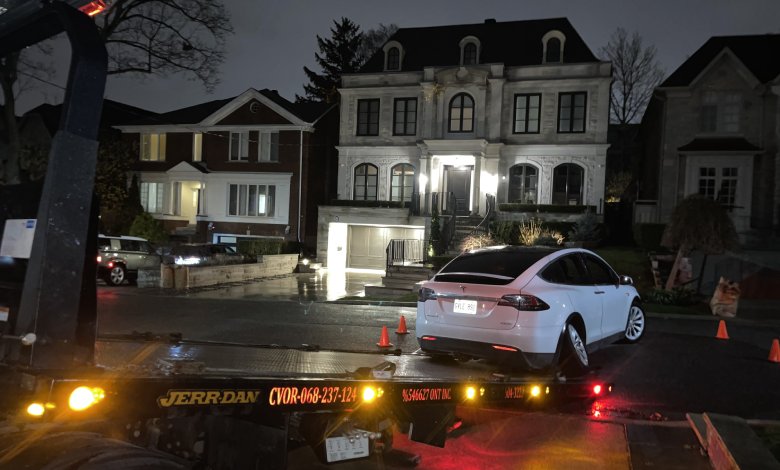
Why Alternative Methods Are Generally Prohibited
- Wheel-Lift Towing: This method uses a yoke or sling to lift only two wheels off the ground, leaving the other two on the road. For an EV, this is a dangerous practice as the wheels remaining on the pavement will spin, causing the exact damage described above.
- Tow Dolly: A tow dolly lifts the drive wheels (front or rear) but leaves the non-drive wheels on the ground. While a tow dolly can sometimes be acceptable for specific front-wheel-drive (FWD) EVs, the risk of operator error, damage to other systems, and the general complexity means that most towing professionals and manufacturers still recommend flatbed as the safest standard.
III. Pre-Towing Protocol: Essential Steps for EV Owners and Operators
Before an electric vehicle is even loaded onto a flatbed, specific preparation rules must be followed to ensure the vehicle is safe for handling and transport.
- Learn More >>>> medium duty towing service
Rule 1: Consult the Owner’s Manual (The Towing Bible)
Every EV model—whether a Tesla Model 3, a Ford Mustang Mach-E, a Kia EV6, or a Chevrolet Bolt—has a unique towing procedure. Tow operators must be trained to locate and follow these specific instructions, which often detail:
- Tow Hook Locations: The designated, reinforced attachment points on the chassis for winching the vehicle onto the flatbed. Attaching a winch cable to the bumper or frame in the wrong spot can cause severe structural damage.
- “Tow Mode” or “Transport Mode”: Many EVs, particularly those from Tesla, Hyundai, and Kia, have a special software mode that must be activated via the infotainment screen. This mode electronically disengages the drivetrain and/or releases the electronic parking brake, which is essential for safely winching the vehicle. Failure to activate this mode can lock the wheels or damage the system.
- Maximum Distance/Speed for Emergency Rolling: Some manuals permit the vehicle to be rolled for very short distances (e.g., 10 metres at 5 km/h) to position it for the flatbed, but this is a critical limit that cannot be exceeded.
Rule 2: High-Voltage Safety and Collision Protocol
In the event of an accident in Ontario, the rules for towing an electric vehicle become even more stringent due to the high-voltage components.
- Potential for Thermal Runaway: A severely compromised battery pack following a collision presents a fire risk (thermal runaway). Tow operators must be trained to recognize signs of battery damage (smoke, odd smells, extreme heat).
- Isolation and Quarantine: If a battery fire or thermal event is suspected, the vehicle cannot be moved or stored near other vehicles. The operator may need to isolate the vehicle and notify emergency services immediately.
- Handling the HV System: Only personnel trained in high-voltage vehicle handling should attempt to access or manipulate any orange-coloured HV cables.
Rule 3: The Dead Battery Dilemma
A common reason for needing towing an electric vehicle is a completely depleted battery (often called a “brick”).
- No Neutral/Tow Mode: When the 12-volt accessory battery or the main high-voltage battery is completely dead, the vehicle’s electronic systems—including the ability to shift into neutral or activate Tow Mode—may be inoperable.
- The Pars Towing Solution (Skates/Wheel Straps): In a “brick” scenario where the wheels are locked, Pars Towing utilizes specialized wheel skates or specific lift techniques that keep the locked wheels from scraping or being dragged, ensuring the vehicle can be safely winched and loaded without causing tyre or suspension damage.
IV. The Ontario Regulatory Framework: TSSEA and Consumer Protection
The towing industry in Ontario is governed by the Towing and Storage Safety and Enforcement Act (TSSEA), which sets out a mandatory code of conduct for all operators. While these rules apply to all vehicles, they are particularly relevant when towing an electric vehicle due to the higher specialized cost and risk.
A. Consumer Rights under TSSEA (Effective 2024)
Pars Towing operates in full compliance with all TSSEA regulations, ensuring maximum protection for the EV owner:
- Written Consent: The tow truck driver must obtain the owner’s written consent before beginning any towing an electric vehicle service, except in cases directed by law enforcement (e.g., on a 400-series highway) or through a pre-arranged roadside assistance contract.
- Itemized Invoice: Before requesting payment, the operator must provide an itemized invoice detailing the services rendered. Because flatbed towing an electric vehicle is typically more expensive than a basic tow, this transparency is critical.
- Owner’s Choice: The EV owner has the right to choose the towing destination—be it a specialized EV repair shop in Aurora, a home, or a designated charging station—unless directed otherwise by police.
- Certification: All Pars Towing operators and the company itself are fully certified under TSSEA, ensuring the drivers have met the provincial standards for training and professionalism, which is essential for handling complex vehicles like EVs.
B. Special Considerations for the Aurora Area
For Pars Towing’s service area in and around Aurora, additional local factors dictate the speed and safety of the service:
- Response Time: Given the limited availability of specialized flatbeds compared to standard tow trucks, rapid dispatch is crucial. Pars Towing maintains a modern fleet that prioritizes flatbeds for all EV calls, minimizing the time a high-value EV sits exposed on the roadside.
- Weight Distribution: EVs are significantly heavier than their ICE counterparts due to the battery pack. Our flatbeds are rated for the increased Gross Vehicle Weight (GVW) of modern electric trucks and SUVs, ensuring stable and safe transport on highways like the 404.
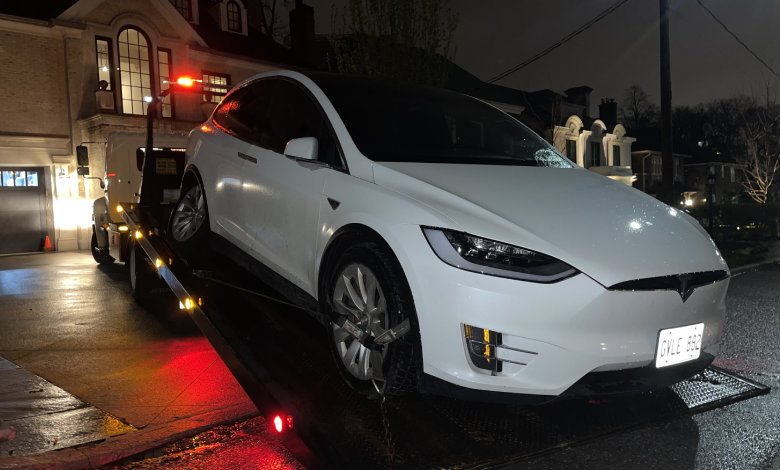
V. Best Practices for Professional Towing an Electric Vehicle
Moving beyond the basic rules, the highest standard of care for towing an electric vehicle involves meticulous operational procedures.
1. Winching and Loading Best Practices
- Shallow Angle Loading: EVs, especially performance models, often have very low ground clearance. The flatbed’s tilt angle must be as shallow as possible to prevent the front bumper, rocker panels, or the battery casing from scraping the ground or the ramps during the winching process. Pars Towing utilizes specialized low-approach flatbeds designed for sports cars and EVs.
- Safe Securement: Once on the flatbed, the EV must be secured using specialized wheel straps that loop around the tires. These straps should be tightened to the deck’s anchor points without crossing over the bodywork or high-voltage lines. Crucially, the straps must be checked for even tension to prevent the vehicle from shifting, which is a major risk given the EV’s unique weight distribution.
2. Post-Collision Recovery and Inspection
After a severe collision, the rules of towing an electric vehicle require an inspection beyond mechanical damage.
- Cooling System Check: The battery uses a complex thermal management system. Any collision that affects the vehicle’s coolant lines (which are often run along the floor/chassis) can jeopardize battery health. Tow operators should note any fluid leakage and relay this information immediately to the repair facility.
- Do Not Attempt to Charge: If an EV has been involved in an accident, the owner should never attempt to plug it into a charger until a qualified EV repair technician has cleared the vehicle’s HV system for safety. The tow service’s role is strictly transport to a qualified facility.
VI. Conclusion: The Future of Towing in Aurora
The proliferation of electric vehicles is an exciting development, but it imposes a new level of responsibility on the service industry. Towing an electric vehicle is no longer a generic service; it is a highly specialized, technically demanding discipline that carries significant risk if performed incorrectly.
For the EV owner in Aurora, the rule is simple: always request a flatbed and verify that the towing company is trained and compliant with manufacturer protocols.
For Pars Towing, our commitment to the community means that our investment in specialized low-approach flatbeds, advanced rigging equipment, and continuous operator training ensures we are the definitive, damage-free choice for towing an electric vehicle in the York Region. As electric mobility shapes the future of transportation, we stand ready to provide the professional, rule-compliant recovery services that this new generation of vehicles demands.

